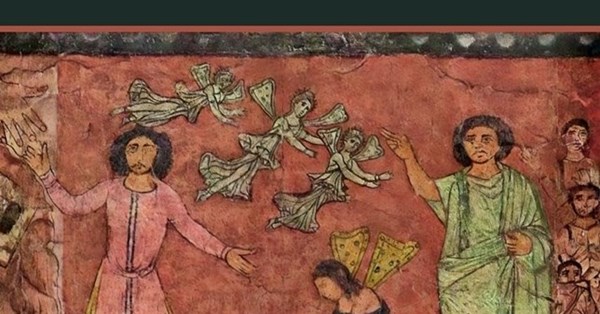THIS book on St Paul’s teaching on ethnicity and eschatology is a challenging read. It is vigorously and rigorously argued, discussing an exhaustive range of scholarly literature both old and new (the bibliography runs to 40 pages), questioning many supposed certainties, and suggesting many new solutions. The argument of the book is not easy to follow, although its plan is set out on page 26 and generously summed up again at the end (pages 241-3), but each individual argument is courteously signposted and pursued to the death.
Matthew V. Novenson refuses to fit Paul neatly into any one category of Jew, such as Hellenistic or marginal or messianic or eschatological, which would lock him into a particular stream of influence. Perhaps all that can be said is that Paul stands before the great judgement seat of God at the end of history, not in the immediate or the distant future, but in the open-ended present; for “the present pattern of the world is passing away” (1 Corinthians 7.31). More gripping than this categorisation are the component arguments that precede and follow it.
Much of the interest of the book is not the overall theme so much as the individual discussions. So, the second chapter is devoted to the meaning of “judaismos”, of which Paul accuses Peter in Galatians 1.13-14 (the only occurrences of verb or noun in the NT). In a long consideration (20 pages), this is found to mean not “to behave like a Jew” but “to pursue an aggressive policy of making people behave like a Jew”, and yet elsewhere “the grammatical subject of the verb is always a gentile, never a Jew” (page 36), which seems surprising.
On the other hand, chapter 3 resolves a great difficulty by asking whether anyone — apart from the Qumran text 4QMMT — actually held that justification could be won by mere observance of the works of the Law. In the two instances where Paul is accused of claiming this (Galatians 3.11 and Romans 3.20), he is merely explaining the quotation of the psalm and emphasising that there is no justification through the works of the Law: a mere aside (page 53).
One fascinating emphasis, running throughout the book, is on the wrongness of the basic thesis of F. C. Baur on the clear distinction between Petrine Jewish Christianity and Pauline Gentile Christianity (page 78, footnote 5), which has dominated discussion of Paul’s “legalism” since 1831. Rather, Paul’s great idea was not that Gentile Christianity is the true Judaism, but that Israel according to the flesh remains the true Israel, which has reached perfection in Christ, and that this “entails the gentiles sharing in the happy fate of Israel” (page 243).
It is difficult to say which is the most exciting feature of this densely packed volume, the range of its mastery of the sources and of contemporary discussion or the careful evaluation of its argument, or even the courtesy and good temper of the discussion.
Fr Henry Wansbrough OSB is a monk of Ampleforth, emeritus Master of St Benet’s Hall, Oxford, and a former member of the Pontifical Biblical Commission.
Paul and Judaism at the End of History
Matthew V. Novenson
Cambridge University Press £30
(978-1-316-51984-4)
Church Times Bookshop £27

















